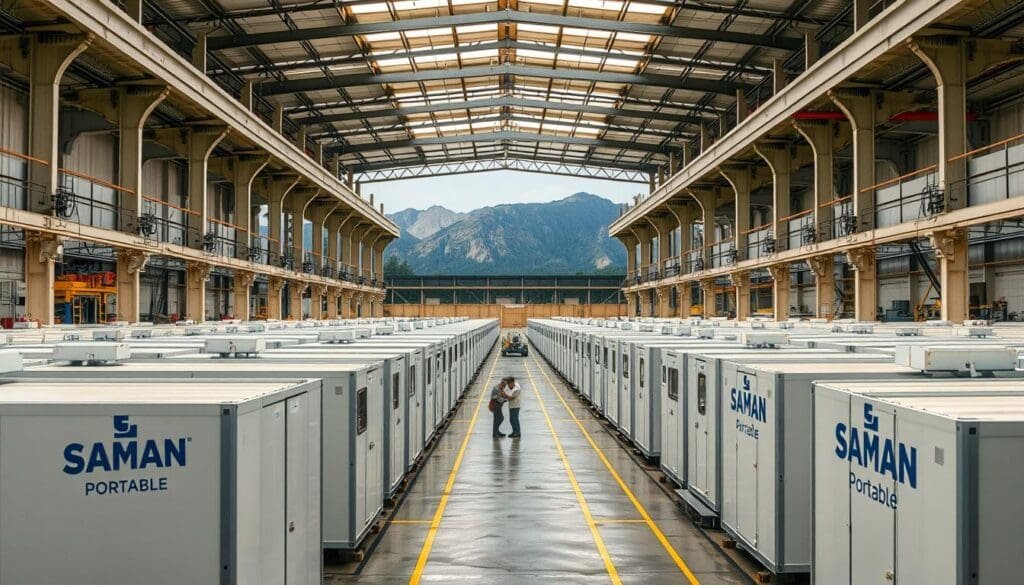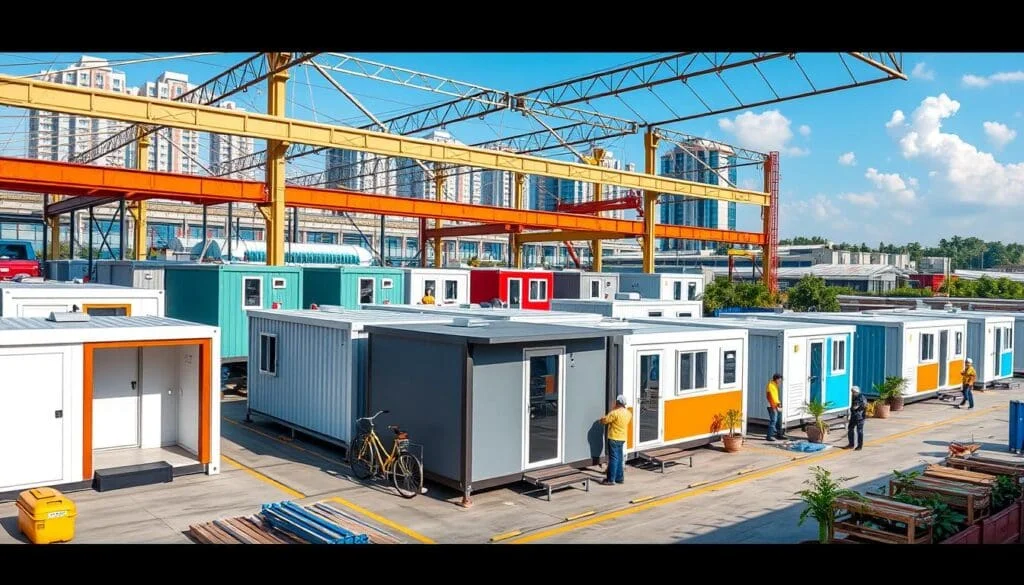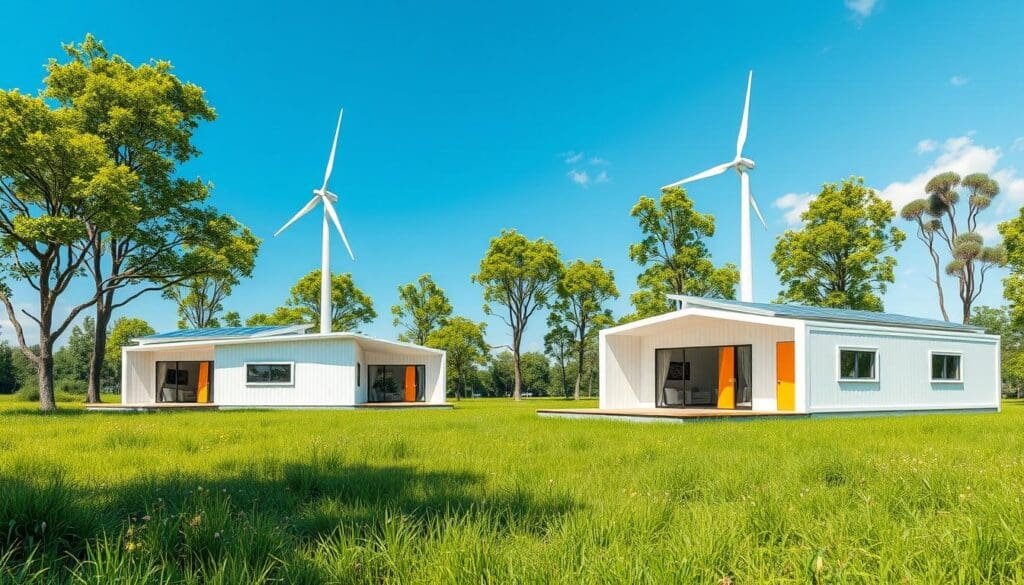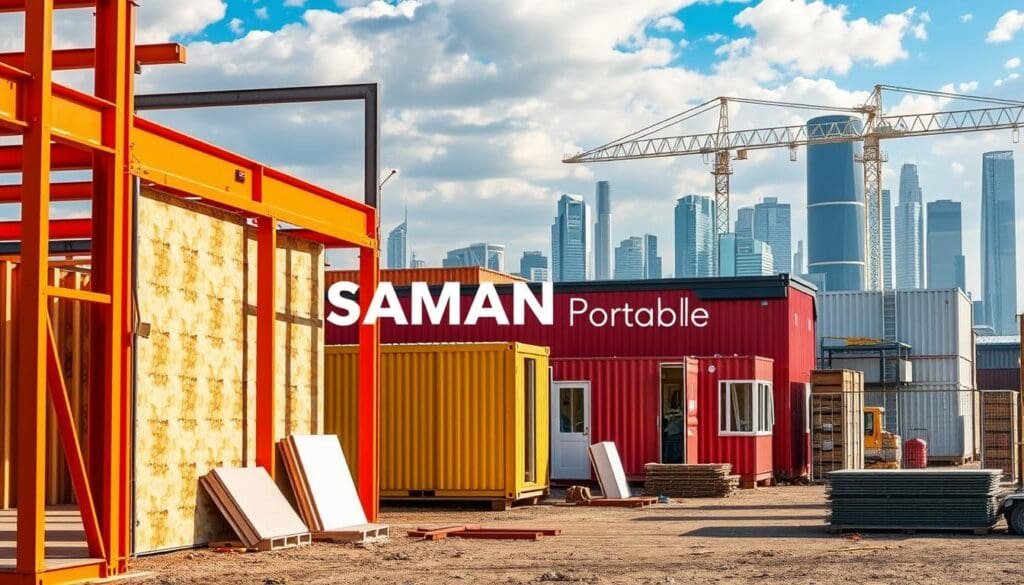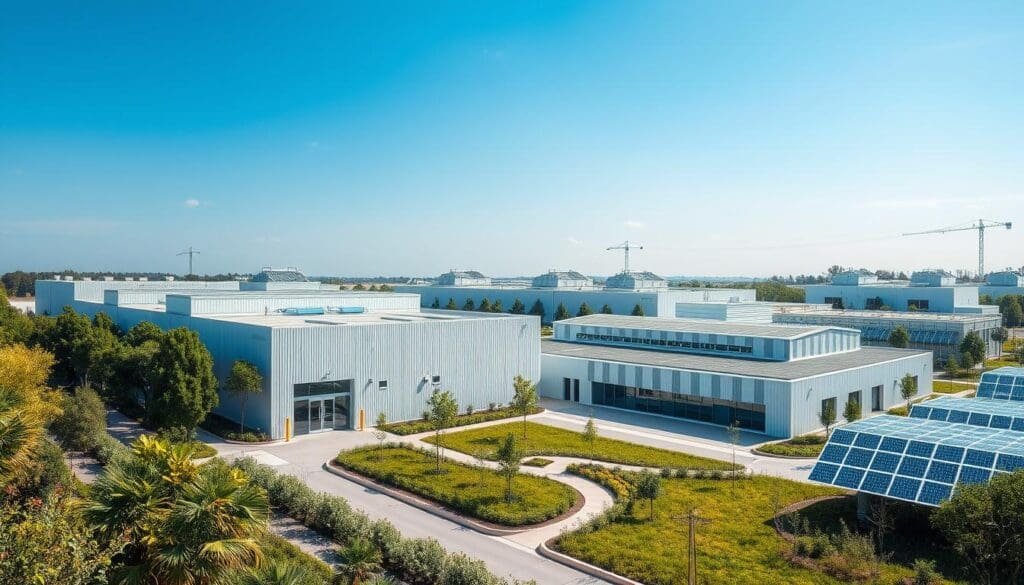The Ultimate Guide 2024 to Pre-Engineered Building Manufacturers in India
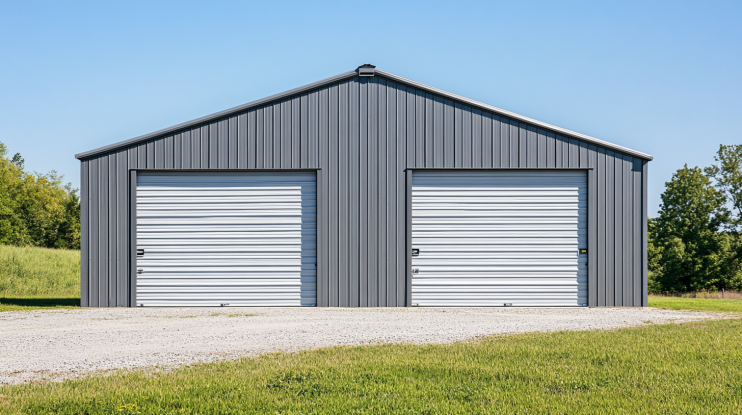
Introduction to Pre-Engineered Buildings (PEBs)
Pre-Engineered Buildings (PEBs) are structures made using pre-determined materials and specific manufacturing processes. These buildings use steel for strength and flexibility. Because they are made in factories and assembled on-site, construction time and labor costs are much lower. This makes PEBs a fast and efficient building option.
The concept of PEBs started in the early 20th century. Back then, improvements in steel production made standardized building parts possible. After World War II, the need for quick construction grew, leading to more use of PEBs. Over time, technology has made PEBs even better and more popular around the world.
PEBs have many benefits compared to traditional building methods. They cost less, save time, and offer flexible designs. PEBs are strong and can handle tough weather. They are also energy-efficient and need little maintenance. Because of these features, PEBs are a great choice for sustainable buildings. Many pre-engineered building manufacturers highlight these benefits to attract customers.
Historical Evolution of PEBs
The idea of Pre-Engineered Buildings began in the early 1900s. During this time, advances in steel production allowed for the creation of standard building components. This made construction faster and more efficient. As time passed, the use of PEBs grew.
After World War II, there was a big demand for quick construction. PEBs met this need perfectly. They could be built quickly and efficiently, which was important for rebuilding efforts. Over the years, technology continued to improve, making PEBs even more reliable and versatile.
Today, PEBs are popular worldwide. They are used in many types of construction due to their speed and cost-effectiveness. Innovations in design and materials have made PEBs a preferred choice. Many pre-engineered building manufacturers now use advanced technology to offer better solutions for various building needs.
Importance and Benefits of PEBs
PEBs are important because they offer many benefits over traditional building methods. One major advantage is cost-effectiveness. PEBs are cheaper to build due to their efficient use of materials and labor. Additionally, the construction process is much faster, saving both time and money.
Another benefit is the flexibility in design. PEBs can be customized to meet specific needs, making them suitable for many types of buildings. They are also durable and can withstand harsh weather conditions. This makes them a reliable choice for long-lasting structures.
Furthermore, PEBs are energy-efficient. They help save on energy costs and are environmentally friendly. Minimal maintenance is required, adding to their cost-effectiveness. Because of these advantages, many pre-engineered building manufacturers recommend PEBs for both commercial and residential projects.
PEBs vs. Conventional Construction Methods
When compared to conventional construction, PEBs have many advantages. Traditional building methods often take longer due to on-site fabrication. PEBs, however, are pre-fabricated, reducing construction time by up to 50%. This makes PEBs a quicker and more efficient choice.
PEBs also offer greater design flexibility. They can be easily modified or expanded, which is not always possible with traditional buildings. Additionally, the use of high-quality materials in PEBs ensures they have a longer lifespan. This reduces maintenance costs over time.
Another key difference is cost. PEBs are generally more cost-effective than conventional methods. They save money on both materials and labor. Because of these benefits, many pre-engineered building manufacturers advocate for PEBs as a superior alternative to traditional construction.
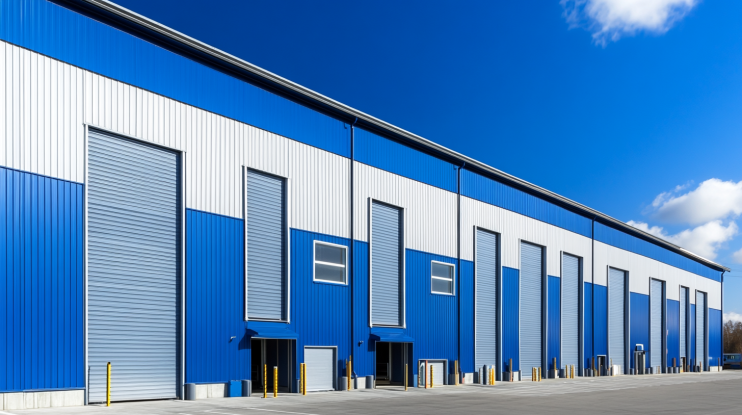
Blue pre-engineered-building
Types of Pre-Engineered Buildings
Industrial Buildings
Industrial PEBs are designed for manufacturing, processing, and storage activities. They provide large, open spaces with high ceilings, which are ideal for industrial operations. These buildings have minimal internal columns, making the space more efficient.
PEBs are perfect for industrial use because they are strong and durable. They can withstand heavy loads and harsh environments. This makes them a reliable choice for factories and warehouses. Many pre-engineered building manufacturers specialize in creating these industrial structures.
Additionally, industrial PEBs can be customized to meet specific needs. They offer flexibility in design, allowing for easy modifications and expansions. This adaptability is a major benefit for businesses that require tailored industrial spaces.
Warehouses
PEB warehouses are ideal for storage needs. They offer large, open spaces without internal columns. This makes them perfect for storing goods and materials. These buildings are also strong and can handle heavy loads.
Warehouses made from PEBs are designed for durability. They can withstand harsh weather conditions, ensuring the safety of stored items. Many pre-engineered building manufacturers focus on creating robust and reliable warehouse solutions.
Moreover, PEB warehouses can be customized. They can be tailored to meet specific storage requirements. This flexibility makes them a preferred choice for many businesses. The efficiency and strength of PEB warehouses make them an excellent investment.
Commercial Buildings
Commercial PEBs are used for retail stores, malls, and office buildings. These structures are designed to look attractive while being functional. They offer flexible interior layouts, which can be easily modified as needed.
PEBs are great for commercial use because they are cost-effective and quick to build. This is important for businesses that need to open quickly. Many pre-engineered building manufacturers provide customized commercial building solutions to meet various business needs.
Additionally, commercial PEBs are durable and require minimal maintenance. They can handle heavy foot traffic and daily wear and tear. This makes them a reliable choice for long-term commercial use. Their adaptability and strength make them a popular choice in the commercial sector.
Institutional Buildings
Institutional PEBs include schools, colleges, hospitals, and clinics. These buildings are designed to be safe and durable. They meet strict safety and building code requirements, ensuring the safety of occupants.
PEBs are ideal for institutional use because they can be built quickly. This is important for institutions that need to be operational in a short time. Many pre-engineered building manufacturers focus on creating safe and efficient institutional buildings.
Additionally, PEBs offer flexibility in design. They can be customized to meet specific needs, such as classrooms or patient rooms. This adaptability makes them a preferred choice for educational and healthcare facilities. The speed and safety of PEBs make them a reliable option for institutional buildings.
Residential Buildings
PEBs can also be used for housing. They offer cost-effective and durable solutions for residential needs. These buildings are especially popular in areas prone to natural disasters due to their resilience.
Residential PEBs can be built quickly, providing a fast housing solution. This is important for regions needing immediate housing. Many pre-engineered building manufacturers offer customized residential solutions to meet various housing needs.
Additionally, PEB homes are energy-efficient and require little maintenance. This makes them a sustainable choice for long-term living. Their strength and quick construction make them a reliable option for residential buildings. The flexibility and efficiency of PEBs make them an excellent choice for housing.
Agricultural Buildings
Agricultural PEBs include barns, stables, and storage sheds. These buildings are designed to protect livestock, equipment, and crops. They offer strong and long-lasting solutions for agricultural needs.
PEBs are ideal for agriculture because they are durable and can withstand harsh weather. This ensures the safety of animals and equipment. Many pre-engineered building manufacturers specialize in creating robust agricultural structures.
Additionally, agricultural PEBs can be customized to meet specific needs. They offer flexibility in design, allowing for easy modifications. This adaptability is a major benefit for farmers and agricultural businesses. The strength and efficiency of PEBs make them a reliable choice for agricultural buildings.
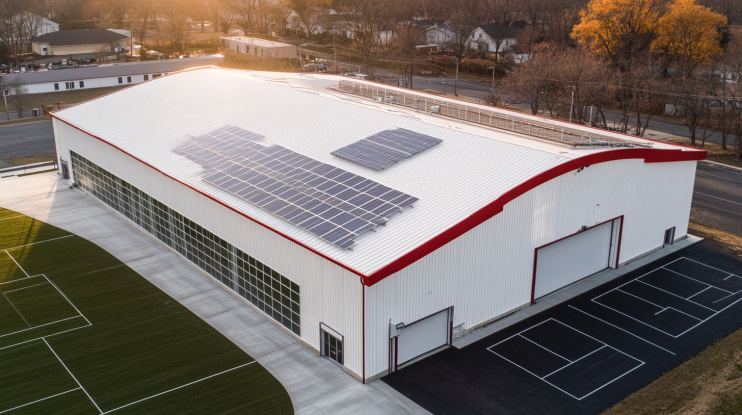
White pre-engineered building
Key Components of Pre-Engineered Buildings
Primary Framing
The primary framing of a Pre-Engineered Building (PEB) includes the main structural parts like columns, rafters, and beams. These parts are very strong and are usually made of high-strength steel. They hold up the building and ensure it stays sturdy. Because of their strength, these components are vital for the building’s safety and durability.
These components are designed to bear heavy loads, making them essential for the building’s structure. They are crafted to support the weight of the entire building, including the roof and walls. By using high-quality steel, pre-engineered building manufacturers ensure these parts last a long time.
Additionally, the primary framing is put together at the construction site. This process allows for precise assembly, ensuring everything fits perfectly. Pre-engineered building manufacturers focus on making these components to exact specifications, providing a strong and reliable framework for various building types.
Secondary Framing
Secondary framing consists of elements like purlins, girts, and eave struts. These parts help support the roof and wall panels. They play a crucial role in adding extra strength to the building. By distributing loads evenly, they ensure the structure remains stable.
These components also help in reducing the stress on the primary framing. They act as additional support, making sure the building can handle various loads. Pre-engineered building manufacturers design these parts to work seamlessly with the main structure.
Moreover, secondary framing helps in maintaining the shape and integrity of the building. It supports the exterior panels and ensures they stay in place. This added support is essential for the building’s overall durability and performance. Pre-engineered building manufacturers often customize these elements to meet specific design needs.
Roof and Wall Panels
Roof and wall panels in PEBs are usually made of steel or aluminum. These materials provide a tough and weather-resistant outer layer. The panels protect the building from harsh weather conditions, keeping the inside safe and dry. Pre-engineered building manufacturers use these materials because they are strong and long-lasting.
These panels can also be insulated to improve energy efficiency. Insulation helps keep the building warm in winter and cool in summer. This not only makes the building comfortable but also reduces heating and cooling costs. Many pre-engineered building manufacturers offer different insulation options to meet energy efficiency goals.
In addition, the panels come in various styles and colors. This allows for customization to match aesthetic preferences. Pre-engineered building manufacturers provide a range of options to suit different design needs. The right choice of panels enhances both the look and functionality of the building.
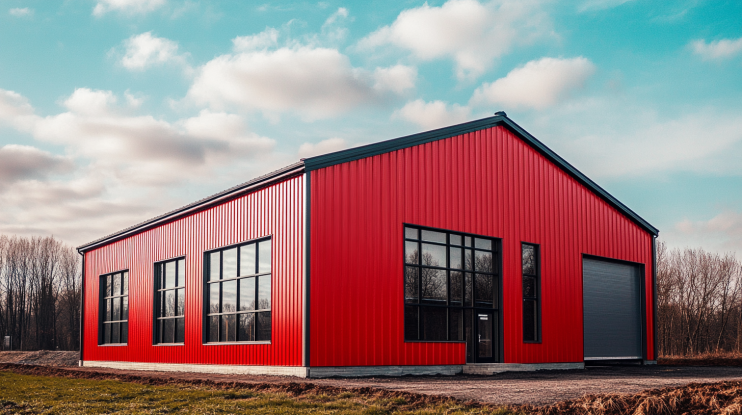
Red pre-engineered building
Materials Used in Pre-Engineered Buildings
Steel
Steel is the main material used in PEBs. It is strong, flexible, and durable, making it perfect for building large spaces with few internal supports. This strength allows for open floor plans, which are ideal for many uses. Pre-engineered building manufacturers prefer steel for its reliability and performance.
Additionally, steel structures can be assembled quickly. This speed is a major advantage in construction, saving both time and money. The durability of steel also means the buildings require less maintenance over time. Pre-engineered building manufacturers ensure the steel used meets high standards of quality.
Moreover, steel is recyclable, making it an eco-friendly choice. Using steel helps reduce waste and supports sustainable building practices. Many pre-engineered building manufacturers emphasize the environmental benefits of steel in their projects.
Aluminum
Aluminum is another key material used in PEBs. It is lightweight and resistant to corrosion, making it ideal for roof and wall panels. This resistance is especially useful in coastal and industrial areas. Pre-engineered building manufacturers use aluminum to create durable and low-maintenance structures.
This material is also easy to work with, allowing for various design possibilities. Aluminum panels can be shaped and colored to fit specific design needs. Pre-engineered building manufacturers offer a range of options to ensure the building looks good and performs well.
Additionally, aluminum’s lightweight nature makes transportation and installation easier. This helps reduce construction time and costs. Many pre-engineered building manufacturers highlight the efficiency and benefits of using aluminum in their buildings.
Galvanized Iron
Galvanized iron is often used for structural components and secondary framing. It has a coating that prevents rust, making it last longer. This coating ensures the building remains strong and durable over time. Pre-engineered building manufacturers choose galvanized iron for its longevity and resistance.
This material is also strong, providing essential support for the building. It is used in various parts of the structure to ensure stability and strength. Pre-engineered building manufacturers rely on galvanized iron to create robust and reliable buildings.
Moreover, galvanized iron requires minimal maintenance. The protective coating keeps it in good condition, reducing the need for repairs. Pre-engineered building manufacturers often use this material to ensure the building remains in top shape with less upkeep.
Insulation Materials
Insulation is vital in PEBs for regulating indoor temperatures. Common insulation materials include fiberglass, foam, and rock wool. These materials help keep the building warm in winter and cool in summer. Pre-engineered building manufacturers use these materials to enhance energy efficiency.
These insulation materials also help reduce energy costs. By keeping the indoor temperature stable, they reduce the need for heating and cooling. This makes the building more comfortable and cost-effective. Many pre-engineered building manufacturers offer different insulation options to meet specific needs.
Additionally, good insulation improves the building’s overall performance. It helps in noise reduction and moisture control. Pre-engineered building manufacturers use high-quality insulation to ensure the building remains efficient and comfortable throughout its lifespan.
Fasteners
High-quality fasteners are crucial for the stability of PEBs. They connect different components securely, ensuring the building stays intact. These fasteners are made from strong materials to provide maximum support. Pre-engineered building manufacturers focus on using the best fasteners to enhance building strength.
These fasteners also play a role in the building’s durability. They help maintain the structure’s integrity over time, preventing parts from coming loose. Pre-engineered building manufacturers choose fasteners that can withstand various stresses and loads.
Moreover, using the right fasteners ensures easy and efficient assembly. This speeds up the construction process and ensures everything fits perfectly. Many pre-engineered building manufacturers emphasize the importance of high-quality fasteners in their building projects.
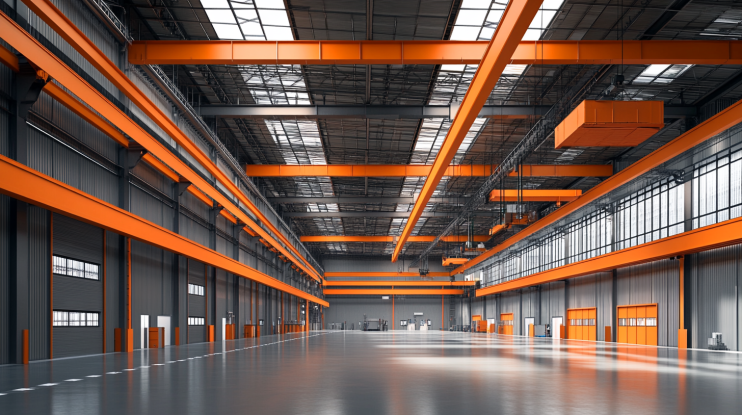
Orange pre-engineered building
Design and Engineering of Pre-Engineered Buildings
Structural Design Principles
Pre-Engineered Buildings (PEBs) use advanced structural engineering to ensure they are strong, stable, and safe. Engineers calculate loads and choose the right materials to create an efficient layout. This design process ensures the building can handle various stresses and forces.
Moreover, engineers focus on optimizing the building’s layout. They aim to make the best use of materials and space. By doing so, they ensure the building is both functional and cost-effective. Pre-engineered building manufacturers emphasize these principles to deliver high-quality structures.
Additionally, the design process involves detailed planning. Engineers consider every aspect to ensure the building’s safety and performance. This meticulous approach ensures the building meets all necessary standards and performs well under different conditions.
Load Considerations
Designing a PEB requires careful attention to various loads. Engineers consider dead loads, live loads, wind loads, and seismic loads. These calculations ensure the building can withstand different forces. This process is crucial for the building’s stability.
Dead loads are the building’s weight, while live loads include people and furniture. Wind and seismic loads are environmental forces. Engineers use these factors to design a strong and resilient structure. Pre-engineered building manufacturers prioritize these considerations to ensure safety.
Furthermore, understanding these loads helps in selecting appropriate materials. Engineers choose materials that can handle these stresses effectively. This approach ensures the building remains safe and durable. By focusing on these load considerations, pre-engineered building manufacturers deliver reliable buildings.
Environmental Factors
Environmental factors play a crucial role in designing PEBs. Engineers consider temperature, humidity, and exposure to corrosive elements. These factors influence material selection and design specifications. This ensures the building lasts long and performs well.
For instance, high humidity may require corrosion-resistant materials. Similarly, extreme temperatures need materials that can withstand expansion and contraction. By addressing these factors, pre-engineered building manufacturers create buildings that are durable and efficient.
Additionally, these factors impact the building’s overall performance. Proper material selection helps in maintaining the building’s integrity. This approach ensures the building remains in good condition under various environmental conditions. Pre-engineered building manufacturers emphasize these considerations for optimal performance.
Building Codes and Standards
Compliance with Regulations
PEBs must follow local building codes and standards. These regulations ensure structural integrity and safety. Engineers design buildings to meet these legal requirements. This compliance ensures the building is safe for use.
Building codes cover various aspects, including load-bearing capacity and environmental impact. Engineers design PEBs to meet these standards. This ensures the building is both strong and eco-friendly. Pre-engineered building manufacturers adhere to these regulations for quality assurance.
Moreover, compliance with these codes ensures the building’s reliability. It provides peace of mind to users, knowing the building meets all safety criteria. This focus on regulations helps pre-engineered building manufacturers maintain high standards.
Customization Options
One major advantage of PEBs is their design flexibility. Customers can customize the building’s dimensions, layout, and aesthetics. This allows for personalized designs that meet specific needs. Pre-engineered building manufacturers offer various customization options.
Customization includes choosing the building’s size and shape. Customers can also select interior and exterior finishes. This flexibility ensures the building suits its intended use. Pre-engineered building manufacturers provide tailored solutions for different applications.
Furthermore, customization options make PEBs adaptable. They can be modified or expanded easily. This adaptability ensures the building remains functional even if needs change. Pre-engineered building manufacturers emphasize this flexibility for customer satisfaction.
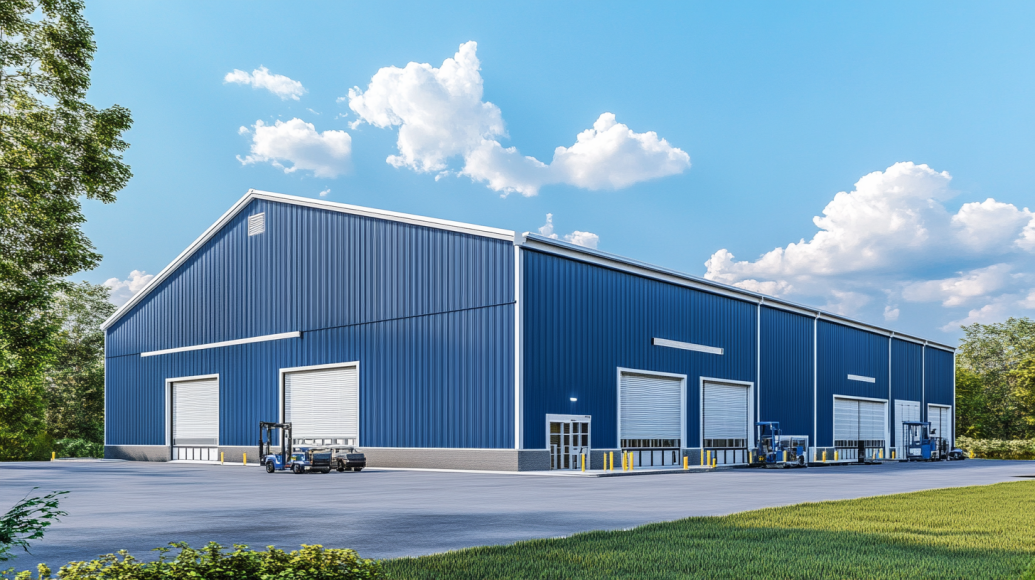
Dark blue pre-engineered building
Advantages of Pre-Engineered Buildings
Cost-Effectiveness
PEBs are highly cost-effective. They use materials efficiently and reduce labor costs. The shorter construction timeline also saves money. These factors make PEBs an attractive option for budget-conscious projects. Pre-engineered building manufacturers highlight this cost advantage.
Moreover, the efficient use of materials minimizes waste. This approach reduces overall costs. By saving on both materials and labor, PEBs offer great value. Pre-engineered building manufacturers ensure projects stay within budget.
Additionally, the quick construction process means earlier occupancy. This is especially beneficial for businesses. Faster project completion allows operations to start sooner. Pre-engineered building manufacturers prioritize these efficiencies for customer benefit.
Time Efficiency
The pre-fabrication process of PEBs significantly reduces construction time. Buildings are assembled quickly, allowing for faster project completion. This is crucial for projects with tight deadlines. Pre-engineered building manufacturers focus on timely delivery.
Moreover, quicker construction means less disruption. This is beneficial for projects in busy areas. Faster assembly ensures minimal impact on surrounding activities. Pre-engineered building manufacturers emphasize this time efficiency.
Additionally, earlier occupancy is a major advantage. It allows businesses to start operations sooner. This swift construction process benefits all types of projects. Pre-engineered building manufacturers ensure timely completion for customer satisfaction.
Flexibility in Design
PEBs offer great design flexibility. They can be easily modified or expanded. This adaptability suits various applications. Pre-engineered building manufacturers provide customized solutions.
Design flexibility includes changing dimensions and layout. This allows buildings to meet specific needs. Pre-engineered building manufacturers tailor designs to customer requirements. This ensures the building is functional and aesthetically pleasing.
Moreover, flexible designs future-proof the building. They allow for easy upgrades and expansions. This adaptability is ideal for growing businesses. Pre-engineered building manufacturers focus on creating versatile buildings.
Durability and Strength
PEBs are known for their durability and strength. They can withstand extreme weather and heavy loads. This ensures a long lifespan and reliable performance. Pre-engineered building manufacturers use high-quality materials.
Moreover, these buildings are designed to handle seismic activities. This makes them safe in earthquake-prone areas. Pre-engineered building manufacturers ensure buildings meet safety standards. This focus on strength provides peace of mind.
Additionally, the robust construction reduces maintenance needs. PEBs remain in good condition for years. This durability is a key advantage. Pre-engineered building manufacturers emphasize this benefit.
Energy Efficiency
Modern insulation materials make PEBs energy-efficient. They help maintain indoor temperatures. This reduces heating and cooling costs. Pre-engineered building manufacturers use advanced insulation techniques.
Energy efficiency also minimizes environmental impact. It lowers energy consumption. This makes PEBs an eco-friendly choice. Pre-engineered building manufacturers highlight this sustainability.
Moreover, efficient buildings provide comfortable indoor environments. They enhance living and working conditions. This benefit is important for both residential and commercial buildings. Pre-engineered building manufacturers prioritize energy efficiency.
Low Maintenance
PEBs require minimal maintenance. Their robust construction and high-quality materials ensure longevity. This reduces long-term maintenance costs. Pre-engineered building manufacturers focus on durable designs.
Moreover, low maintenance means less hassle for owners. Buildings stay in good condition with minimal effort. This convenience is a major advantage. Pre-engineered building manufacturers emphasize this benefit.
Additionally, reduced maintenance enhances cost-effectiveness. It lowers overall expenses. This makes PEBs a smart investment. Pre-engineered building manufacturers ensure buildings remain in top shape with little upkeep.
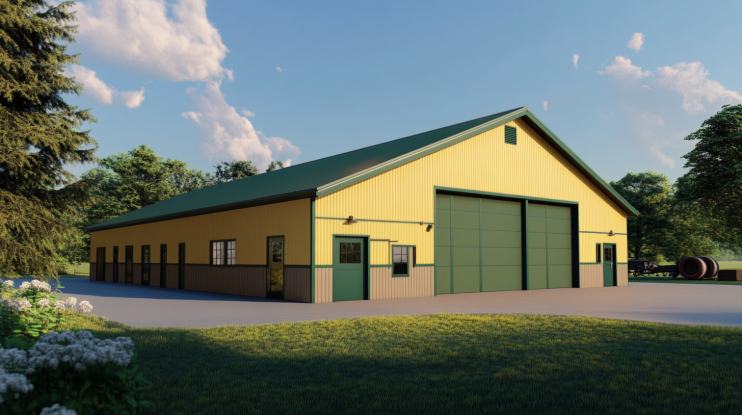
Yellow pre-engineered building
Applications of Pre-Engineered Buildings
Manufacturing Plants
Pre-Engineered Buildings (PEBs) are perfect for manufacturing plants. They offer large, open spaces that fit machinery, production lines, and storage. This open design makes it easy to move equipment and materials. Pre-engineered building manufacturers design these spaces to be flexible.
As production needs change, the layout can be reconfigured easily. This flexibility is a big advantage. It allows plants to adapt quickly. Many pre-engineered building manufacturers highlight this adaptability as a key benefit.
Moreover, PEBs are strong and durable. They can handle heavy equipment and daily operations. This makes them a reliable choice for manufacturing. Pre-engineered building manufacturers ensure these buildings meet all industry requirements.
Distribution Centers
Distribution centers need large, open spaces. PEBs provide this with their expansive interiors. These spaces make it easy to store and move goods. This efficiency is crucial for logistics operations. Pre-engineered building manufacturers design these buildings for optimal use.
The quick construction of PEBs meets the fast-paced demands of the logistics industry. This speed is a major advantage. It allows distribution centers to become operational quickly. Many pre-engineered building manufacturers focus on this benefit.
Additionally, PEBs are strong and durable. They can handle the heavy loads and constant movement typical in distribution centers. This durability ensures long-term use. Pre-engineered building manufacturers emphasize these features for reliable operations.
Retail Stores
Retail stores use PEBs for their many benefits. These buildings look good and can be customized to fit any brand. This customization is important for creating inviting store environments. Pre-engineered building manufacturers offer various design options.
The layout flexibility of PEBs allows for easy changes. Stores can adjust their setup as needed. This is great for adapting to new trends or expanding. Pre-engineered building manufacturers highlight this flexibility.
Moreover, PEBs are built quickly. This rapid construction means stores can open sooner. This is important for business. Many pre-engineered building manufacturers emphasize the fast build time as a key benefit.
Office Buildings
Office buildings made with PEBs are modern and functional. They provide spaces that can be customized and expanded easily. This is great for growing businesses. Pre-engineered building manufacturers offer flexible design options.
These buildings are cost-effective. They save money on construction and maintenance. This is important for businesses looking to cut costs. Pre-engineered building manufacturers focus on providing value.
Additionally, PEBs offer a comfortable and efficient work environment. They can be designed to meet specific needs, like open-plan areas or private offices. This makes them a popular choice for many companies. Pre-engineered building manufacturers ensure these buildings meet all workplace requirements.
Schools and Colleges
Schools and colleges benefit from PEBs for many reasons. These buildings are durable and safe. They provide a good learning environment. Pre-engineered building manufacturers design these spaces with education in mind.
The cost-effectiveness of PEBs is another big advantage. They are cheaper to build and maintain. This is important for educational institutions with tight budgets. Pre-engineered building manufacturers highlight this benefit.
Moreover, PEBs offer flexible design options. They can be customized for classrooms, labs, and offices. This flexibility meets the diverse needs of schools and colleges. Many pre-engineered building manufacturers emphasize these customizable features.
Farm Buildings
Farm buildings, like barns and stables, are well-suited for PEBs. These buildings offer strong protection against the elements. This is crucial for farms. Pre-engineered building manufacturers ensure these structures are durable.
The large, open spaces of PEBs are perfect for equipment and livestock. This layout makes it easy to manage farm operations. Many pre-engineered building manufacturers design these buildings for optimal use.
Additionally, PEBs are cost-effective and quick to build. This is important for farmers looking to save time and money. Pre-engineered building manufacturers focus on providing practical solutions for agricultural needs.
Aircraft Hangars
Aircraft hangars need large, open spaces and high ceilings. PEBs provide this perfectly. These buildings are strong and durable. They ensure safe storage and maintenance of aircraft. Pre-engineered building manufacturers design these hangars to meet all requirements.
The open design of PEBs allows easy movement of aircraft. This efficiency is crucial for hangar operations. Many pre-engineered building manufacturers highlight this benefit.
Moreover, PEBs can be built quickly. This rapid construction is important for the aviation industry. It allows hangars to be ready for use sooner. Pre-engineered building manufacturers emphasize the fast build time as a key advantage.
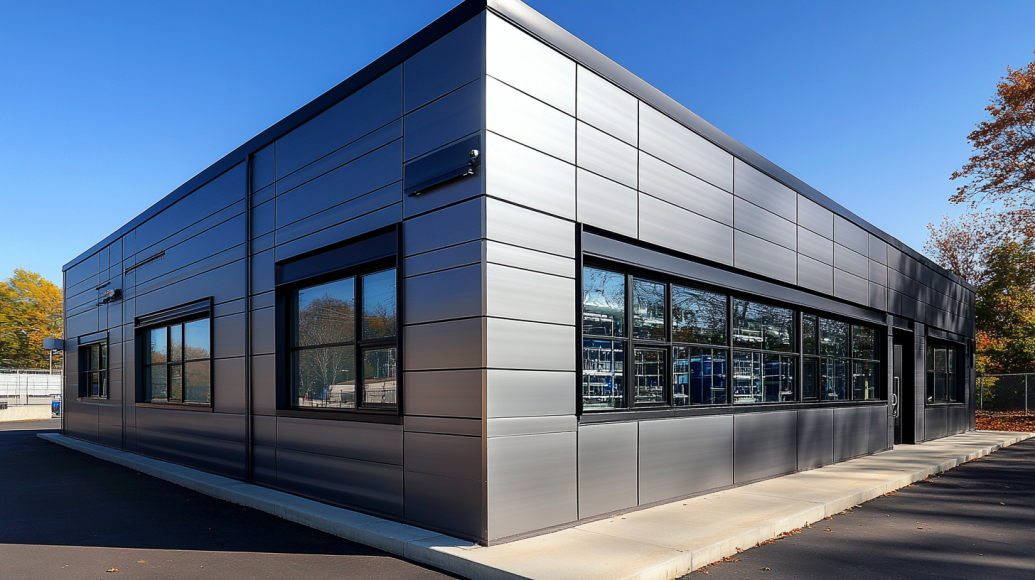
Silver pre-engineered building
Choosing the Right Pre-engineered building Manufacturers
Factors to Consider
When picking a PEB manufacturer, you need to look at several factors. First, consider their experience and reputation. Experienced pre-engineered building manufacturers usually deliver better results. They have more knowledge and skills.
Next, check the quality of materials they use. Good materials mean a stronger and longer-lasting building. Also, look at their customization options. This ensures the building meets your specific needs. Finally, think about their reputation. What do others say about them? This can give you an idea of their reliability.
Moreover, balancing these factors is crucial. Don’t focus on just one aspect. A well-rounded evaluation will lead to a successful project. Pre-engineered building manufacturers who meet these criteria are likely to deliver a satisfactory result. This approach ensures you get the best value for your investment.
Evaluating Manufacturer Expertise
To evaluate a PEB manufacturer’s expertise, start by reviewing their portfolio. Look at past projects they have completed. This will show you the quality of their work. Many pre-engineered building manufacturers showcase their best projects to attract clients.
Next, read client testimonials. These are feedback from people who have worked with the manufacturer. Positive testimonials mean the manufacturer is likely reliable. Also, check for industry certifications. These certifications prove the manufacturer meets certain standards.
Moreover, experienced manufacturers often have better problem-solving skills. They can handle unexpected issues more effectively. This expertise is vital for a smooth construction process. By focusing on these aspects, you ensure you choose a skilled and reliable manufacturer.
Checking References and Reviews
References and reviews are important when choosing a PEB manufacturer. They provide real insights into the manufacturer’s performance. Positive reviews indicate good service and quality. Many pre-engineered building manufacturers rely on good reviews to build their reputation.
First, ask the manufacturer for references. Contact these references to get direct feedback. They can share their experiences and satisfaction levels. This firsthand information is very valuable. Next, look at online reviews. Websites like Google and Yelp have customer reviews that can help you.
Additionally, pay attention to any recurring issues mentioned in reviews. These could be red flags. However, a few negative reviews are normal. Focus on the overall trend. This approach helps you choose a manufacturer committed to quality and customer satisfaction.
Cost Considerations
Cost is an important factor in choosing a PEB manufacturer. However, it should not be the only factor. Low costs can sometimes mean lower quality. It is better to balance cost with quality. Many pre-engineered building manufacturers offer competitive pricing without compromising on quality.
First, get quotes from several manufacturers. Compare their prices and what they offer. Look for hidden costs that might add up later. Also, consider the long-term value. A slightly higher initial cost can save money in the long run due to better quality and durability.
Moreover, think about the reliability and after-sales support. These are crucial for the building’s long-term performance. Investing a bit more for better support and quality can be worth it. By balancing cost with these factors, you make a smart investment.
After-Sales Support
After-sales support is vital for maintaining a PEB. A good manufacturer provides comprehensive support services. This includes maintenance, repairs, and upgrades. Reliable pre-engineered building manufacturers understand the importance of after-sales support.
First, check what support services the manufacturer offers. Do they provide regular maintenance? What about emergency repairs? Knowing these details can save you trouble later. Also, ask about their response time. Quick support can prevent minor issues from becoming major problems.
Moreover, consider the availability of spare parts and upgrades. A manufacturer that offers these ensures your building stays in optimal condition. Good after-sales support also adds to the building’s longevity. By choosing a manufacturer with excellent support, you ensure your building remains strong and efficient for years.
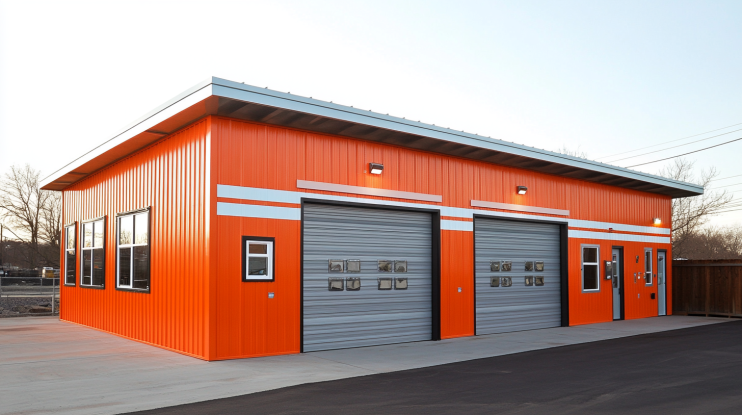
Orange small pre-engineered building
Construction Process of Pre-Engineered Buildings
Initial Planning and Design
The construction process starts with careful planning and design. First, pre-engineered building manufacturers talk to the client to understand their needs. They look at the site and consider any rules they must follow. This helps them make a plan that fits the client’s requirements.
Next, they create detailed blueprints and specifications. These plans guide the entire construction process. They show how each part of the building should look and fit together. Pre-engineered building manufacturers make sure every detail is clear and precise.
Moreover, this stage involves checking all the regulations. The plans must meet local building codes and safety standards. By doing this, pre-engineered building manufacturers ensure the project goes smoothly without legal issues. This thorough planning is key to a successful build.
Fabrication of Components
Once the plans are ready, the next step is fabricating the components. This happens in a factory where conditions are controlled. Pre-engineered building manufacturers use advanced machines to cut and shape the materials. This ensures every piece is made exactly as planned.
The factory setting allows for high precision and consistency. Each part is made to fit perfectly with the others. Quality control measures are in place to check each component. This process helps pre-engineered building manufacturers maintain high standards.
Additionally, working in a factory speeds up the fabrication. Everything is done efficiently, reducing the chances of errors. Pre-engineered building manufacturers can produce all the necessary parts quickly and accurately. This efficiency is crucial for staying on schedule.
Transportation of Materials
After fabrication, the components need to be transported to the construction site. This step requires careful planning and management. Pre-engineered building manufacturers ensure the materials are packed and handled properly to prevent damage.
Timely delivery is important to avoid delays. The transportation process is coordinated to match the construction timeline. This ensures that all materials arrive when needed. Pre-engineered building manufacturers focus on efficient logistics to keep the project moving smoothly.
Moreover, proper handling during transportation maintains the integrity of the materials. Any damage can affect the building’s quality and safety. By managing this step well, pre-engineered building manufacturers ensure the components are ready for assembly without issues.
On-Site Assembly and Erection
Once the materials arrive, the on-site assembly begins. Skilled workers erect the primary and secondary framing first. This creates the basic structure of the building. Pre-engineered building manufacturers ensure this step is done quickly and accurately.
Next, they install the roof and wall panels. Doors, windows, and other accessories follow. Each part is placed according to the detailed plans. This systematic approach helps pre-engineered building manufacturers maintain a smooth workflow.
Additionally, efficient processes and skilled labor speed up the assembly. This reduces the overall construction time. Pre-engineered building manufacturers focus on precise and fast assembly to meet project deadlines and ensure quality.
Quality Control Measures
Quality control is crucial throughout the construction process. Inspections are done at different stages to ensure everything meets the design specifications. Pre-engineered building manufacturers implement strict quality checks to maintain high standards.
These inspections verify the structural integrity and performance of the building. Any issues found are addressed immediately. This proactive approach helps pre-engineered building manufacturers deliver a safe and reliable building.
Moreover, testing is conducted to check the building’s strength and durability. These tests ensure the building can withstand various stresses. By focusing on quality control, pre-engineered building manufacturers ensure the finished product meets all required standards.
Final Inspection and Handover
The final step is the inspection and handover of the building. A thorough review is conducted to check every aspect of the construction. This ensures the building meets all quality and safety standards. Pre-engineered building manufacturers take this step seriously.
Any last-minute adjustments or fixes are made during this inspection. This final check ensures everything is perfect. Once approved, the building is ready for occupancy. Pre-engineered building manufacturers then hand over the building to the client.
Additionally, they provide all necessary documentation and support. This includes maintenance guides and contact information for future support. By completing this final step, pre-engineered building manufacturers ensure the client is satisfied and the building is ready for use.
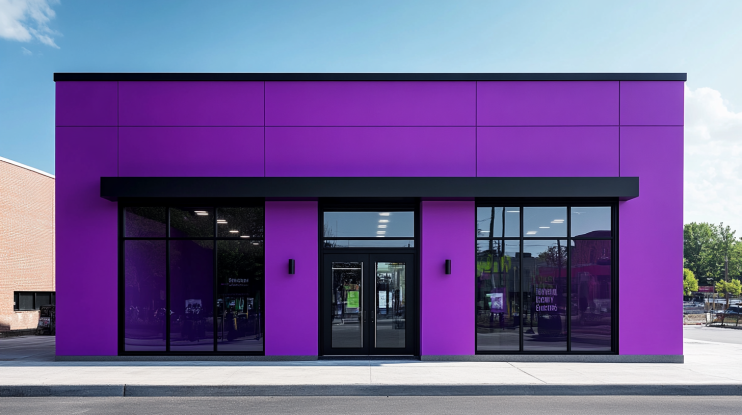
Purple pre-engineered building
Maintenance and Upkeep of Pre-Engineered Buildings
Routine Inspections
Regular inspections are vital for keeping Pre-Engineered Buildings (PEBs) in good condition. These checks help spot issues early. Inspecting structural components, roofing, insulation, and accessories is essential. This routine ensures the building lasts longer.
Moreover, finding problems early can save money. Fixing small issues before they become big problems is smart. Many pre-engineered building manufacturers recommend regular inspections. This practice helps maintain the building’s performance and safety.
Additionally, routine inspections provide peace of mind. Knowing the building is in good shape is reassuring. This proactive approach ensures the PEB remains strong and reliable. Pre-engineered building manufacturers emphasize the importance of regular checks.
Cleaning and Painting
Cleaning and painting PEBs are important tasks. Regular cleaning removes dirt and debris. This keeps the building looking nice. Painting adds a layer of protection against corrosion. These steps help maintain the building’s exterior.
Keeping the building clean also prevents damage. Dirt and grime can cause wear over time. Many pre-engineered building manufacturers suggest regular cleaning. This helps the building stay in top condition.
Moreover, painting helps protect against weather. It prevents rust and damage from the elements. Regular painting keeps the building looking fresh. Pre-engineered building manufacturers offer tips on the best paints and methods. This maintenance task ensures the building remains attractive and durable.
Repairing Damages
Timely repairs are crucial for maintaining PEBs. Fixing dents, cracks, or leaks quickly prevents further damage. This ensures the building stays safe and functional. Pre-engineered building manufacturers recommend using high-quality materials for repairs.
Ignoring small damages can lead to bigger problems. Addressing issues early saves time and money. Professional repair services ensure the job is done right. Pre-engineered building manufacturers emphasize the importance of timely repairs.
Moreover, keeping the building in good repair extends its lifespan. Regular maintenance and quick fixes keep the PEB strong. This proactive approach helps maintain the building’s value. Pre-engineered building manufacturers provide guidance on effective repair methods.
Upgrading Components
Upgrading PEB components can improve energy efficiency. Installing better insulation, windows, and doors enhances comfort. Modern upgrades also boost the building’s functionality. Pre-engineered building manufacturers offer various upgrade options.
Energy-efficient upgrades reduce heating and cooling costs. This makes the building more comfortable. Many pre-engineered building manufacturers highlight these benefits. Upgrades also extend the building’s lifespan.
Additionally, new components can improve the building’s appearance. Modern windows and doors give a fresh look. This adds value to the property. Pre-engineered building manufacturers provide customized solutions for upgrades. These improvements make the PEB more efficient and attractive.
Ensuring Structural Integrity
Maintaining structural integrity is key for PEBs. Regularly check for signs of wear and damage. Addressing issues promptly keeps the building safe. Pre-engineered building manufacturers stress the importance of monitoring structural health.
Proactive maintenance prevents serious problems. Fixing minor issues before they worsen is smart. This approach ensures the building remains strong. Pre-engineered building manufacturers offer tips for maintaining structural integrity.
Moreover, regular checks give peace of mind. Knowing the building is safe is reassuring. This ongoing care ensures the PEB performs well. Many pre-engineered building manufacturers provide guidance on structural maintenance. This helps keep the building robust and reliable.
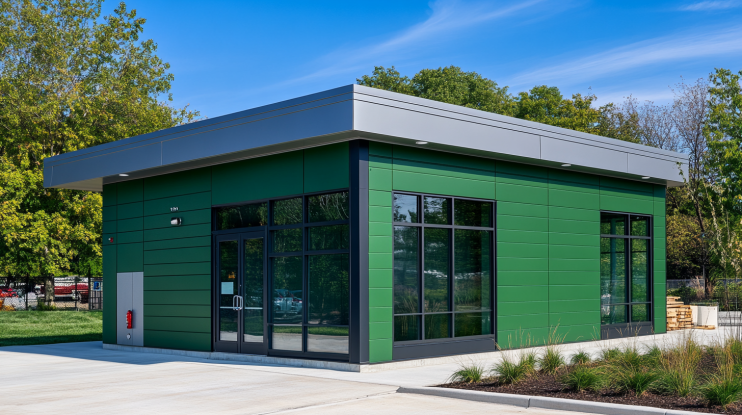
Green pre-engineered building
Case Studies and Success Stories
Industrial PEB Projects
Industrial PEB projects show the benefits of these buildings in manufacturing. They provide large, open spaces for machinery and production lines. These case studies highlight the efficiency and durability of PEBs. Pre-engineered building manufacturers showcase these successful projects.
These buildings are flexible and can be reconfigured as needed. This adaptability is crucial for industrial operations. Many pre-engineered building manufacturers focus on this advantage. These projects demonstrate how PEBs meet complex industrial needs.
Moreover, industrial PEBs are built quickly. This speed is essential in fast-paced industries. These case studies show how PEBs support efficient operations. Pre-engineered building manufacturers use these examples to illustrate the value of their products.
Commercial PEB Projects
Commercial PEB projects highlight their aesthetic and functional benefits. Retail stores and offices benefit from flexible layouts. These buildings can be customized to fit brand identities. Pre-engineered building manufacturers share these success stories.
Quick construction times help businesses open sooner. This is a major advantage. Many pre-engineered building manufacturers emphasize this benefit. These projects show how PEBs create attractive and functional commercial spaces.
Moreover, these buildings are cost-effective. They save money on construction and maintenance. These case studies illustrate the financial benefits. Pre-engineered building manufacturers use these examples to demonstrate the value of PEBs in commercial settings.
Institutional PEB Projects
Institutional PEB projects focus on schools and hospitals. These buildings need to be safe and durable. PEBs meet these needs well. Pre-engineered building manufacturers highlight these successful projects.
These buildings comply with strict codes and standards. This ensures safety and reliability. Many pre-engineered building manufacturers emphasize this compliance. These projects show how PEBs provide efficient institutional facilities.
Moreover, these buildings are built quickly and cost-effectively. This is important for educational and healthcare institutions. These case studies illustrate the practical benefits of PEBs. Pre-engineered building manufacturers use these examples to showcase their products.
Agricultural PEB Projects
Agricultural PEB projects demonstrate their resilience. Barns, stables, and storage sheds benefit from PEBs. These buildings protect livestock and equipment. Pre-engineered building manufacturers share these success stories.
These buildings withstand harsh weather conditions. This durability is crucial for farming. Many pre-engineered building manufacturers focus on this benefit. These projects show how PEBs support sustainable agriculture.
Moreover, these buildings are practical and cost-effective. They provide large, open spaces for farm operations. These case studies illustrate the versatility of PEBs. Pre-engineered building manufacturers use these examples to highlight their effectiveness in agriculture.
Residential PEB Projects
Residential PEB projects showcase their potential in housing. These buildings are affordable and customizable. They provide comfortable living spaces. Pre-engineered building manufacturers highlight these success stories.
These buildings are built quickly, providing fast housing solutions. This is important in emergency housing situations. Many pre-engineered building manufacturers emphasize this speed. These projects show how PEBs create efficient homes.
Moreover, residential PEBs are durable and low-maintenance. This makes them a smart investment. These case studies illustrate the benefits of PEBs in residential settings. Pre-engineered building manufacturers use these examples to demonstrate their versatility and value in housing.
Future Trends in Pre-Engineered Buildings
Advancements in Materials
Ongoing research is bringing new materials to the world of Pre-Engineered Buildings (PEBs). These new materials are stronger, lighter, and more sustainable. This makes PEBs even better in performance. Pre-engineered building manufacturers are excited about these advancements.
Using lighter materials helps make buildings easier to construct. This saves time and money. Stronger materials make the buildings last longer and withstand more stress. Pre-engineered building manufacturers focus on using the best materials available.
Moreover, sustainable materials help protect the environment. These eco-friendly options reduce the building’s impact on the planet. This is important as more people care about green building practices. Pre-engineered building manufacturers are leading the way in using sustainable materials.
Innovations in Design and Engineering
New technology is changing how PEBs are designed and built. Tools like Building Information Modeling (BIM) and computer-aided design (CAD) make planning more precise. These tools help reduce mistakes and save resources. Pre-engineered building manufacturers use these tools to create better buildings.
With BIM and CAD, designers can see every detail of the building before construction starts. This helps in planning and making adjustments early. It also makes the construction process smoother. Pre-engineered building manufacturers find these tools very helpful.
Additionally, these technologies improve communication among all parties involved. Architects, engineers, and builders can work together more efficiently. This teamwork ensures the building is constructed correctly and on time. Pre-engineered building manufacturers benefit greatly from these innovations.
Sustainable Building Practices
Sustainability is a big focus in the PEB industry. Using eco-friendly materials and energy-efficient designs helps reduce the environmental footprint. Pre-engineered building manufacturers are adopting these green practices.
Energy-efficient designs lower heating and cooling costs. This makes buildings more comfortable and saves money. Using renewable energy sources, like solar panels, also helps the environment. Pre-engineered building manufacturers are incorporating these features into their buildings.
Moreover, green building practices attract more customers. People want buildings that are good for the planet. By focusing on sustainability, pre-engineered building manufacturers meet this demand. They create buildings that are both efficient and eco-friendly.
Integration with Smart Technologies
Smart technologies are making PEBs even better. Devices like IoT sensors and automation systems improve building management. These technologies help control energy use, security, and comfort. Pre-engineered building manufacturers are integrating these smart features.
Smart buildings can monitor and adjust energy use automatically. This makes them more efficient and reduces costs. Security systems can also be enhanced with smart technology. Pre-engineered building manufacturers use these advancements to create safer buildings.
Additionally, smart technologies make buildings more comfortable for occupants. Automated systems can control lighting, temperature, and more. This improves the overall experience of living or working in the building. Pre-engineered building manufacturers are excited about these possibilities.
Market Growth and Opportunities
The PEB market is growing quickly. More people want efficient, cost-effective, and sustainable buildings. This demand creates many opportunities for pre-engineered building manufacturers.
Emerging markets are especially promising. These areas need new buildings fast. PEBs are a perfect solution. Technological advancements also help the market grow. Pre-engineered building manufacturers are ready to meet this demand.
Moreover, innovation continues to open new doors. New materials, smart technologies, and green practices make PEBs more appealing. Pre-engineered building manufacturers are at the forefront of this growth. They are ready to expand and innovate, meeting the needs of the future.
Conclusion
To conclude our comprehensive guide on portable cabins, let’s take a moment to recap the key points discussed and how SAMAN Portable can meet your needs. Whether you’re in the market for a robust and versatile porta cabin, require specialized transportable container storage, or want to get a detailed quote, SAMAN Portable has you covered.
If you’re ready to explore more about portable cabins, visit SAMAN Portable’s official website to discover a wide range of high-quality options. For a deeper dive into the prices and features of porta cabins in 2024, our complete guide will provide you with all the essential information.
Additionally, if you need secure and flexible storage solutions, check out our transportable container storage options. For personalized assistance or to make an inquiry, feel free to reach out to us directly.
SAMAN Portable is dedicated to providing top-notch portable cabins and container solutions tailored to your specific requirements. Don’t miss out on the opportunity to enhance your space with our exceptional products. Visit our website today and take the first step towards a smarter, more efficient setup.
Thank you for choosing SAMAN Portable!
FAQs About Pre-Engineered Building Manufacturers
1. What is a Pre-Engineered Building (PEB)?
A Pre-Engineered Building (PEB) is a type of building that is designed and fabricated in a factory before being transported to the construction site for assembly. These buildings are known for their speed of construction, cost-effectiveness, and versatility.
2. What services do pre-engineered building manufacturers offer?
pre-engineered building manufacturers typically offer a range of services, including design, engineering, fabrication, delivery, and assembly of the building components. Some manufacturers may also provide maintenance and after-sales support.
3. What materials are used in pre-engineered buildings?
PEBs are primarily made from steel, including structural steel frames, steel roof and wall panels, and other steel components. These materials are chosen for their durability, strength, and ability to withstand various environmental conditions.
4. What are the advantages of choosing a pre-engineered building?
The advantages of PEBs include faster construction times, cost savings, design flexibility, reduced maintenance, and the ability to customize the building to meet specific needs. PEBs are also known for their energy efficiency and environmental benefits.
5. How long does it take to construct a pre-engineered building?
The construction time for a PEB depends on the size and complexity of the project. However, PEBs are generally faster to construct compared to traditional buildings, with many projects completed in a matter of weeks or a few months.
6. Can pre-engineered buildings be customized?
Yes, pre-engineered buildings can be highly customized to meet the specific requirements of the client. This includes customization in terms of size, shape, design, interior layout, and additional features such as mezzanines, cranes, and insulation.
7. What industries use pre-engineered buildings?
PEBs are used in a wide range of industries, including industrial, commercial, agricultural, aviation, and institutional sectors. They are commonly used for warehouses, factories, retail stores, office buildings, schools, and aircraft hangars.
8. How do pre-engineered building manufacturers ensure the quality of their buildings?
pre-engineered building manufacturers adhere to strict quality control processes during the design, fabrication, and assembly stages. They use high-quality materials and advanced manufacturing techniques to ensure the structural integrity and durability of the buildings.
9. What are the cost considerations for pre-engineered buildings?
The cost of a PEB depends on various factors, including the size, design complexity, materials used, and additional features required. PEBs are generally more cost-effective than traditional buildings due to reduced construction time and labor costs.
10. How can I choose the right pre-engineered building manufacturers?
When choosing a pre-engineered building manufacturer, consider factors such as the company’s experience, reputation, portfolio of completed projects, customer reviews, and the range of services offered. It’s also important to evaluate their ability to meet your specific project requirements and budget.
11. Are pre-engineered buildings environmentally friendly?
Yes, pre-engineered buildings are considered environmentally friendly due to their efficient use of materials, reduced waste during construction, and the ability to incorporate sustainable features such as energy-efficient insulation and solar panels.
12. What is the maintenance requirement for pre-engineered buildings?
PEBs require minimal maintenance compared to traditional buildings. Regular inspections and routine maintenance, such as cleaning and checking for structural integrity, can help ensure the longevity and performance of the building.
 Container Cafe
Container Cafe
















































































